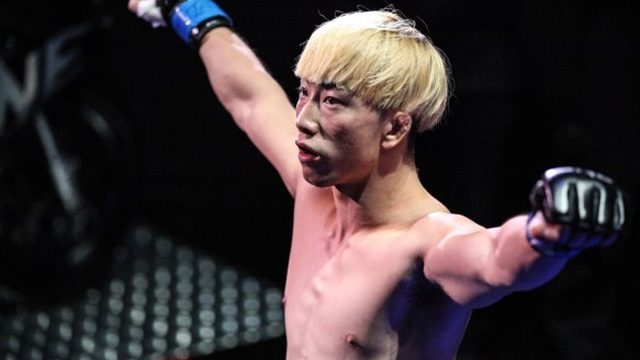SUMMARY
This is AI generated summarization, which may have errors. For context, always refer to the full article.

MANILA, Philippines – Pacific Xtreme Combat (PXC) won’t be following ONE Championship’s lead with a new weigh-in policy.
After the sudden and tragic passing of Chinese combatant Yang Jian Bing due to a heart attack this past December, ONE adopted a new procedure to prevent its athletes from cutting massive amounts of weight prior to a bout.
The objective of ONE’s revamped weigh-in system is to ban all dehydration and conventional weight-cutting practices by having fighters compete at their “walking-around” weights.
With both MMA organizations mainly operating in the Asian region, PXC chief executive officer EJ Calvo stressed that the Guam-based promotion will remain adherent to the Unified Rules of Mixed Martial Arts, which are embraced by all state athletic commissions in the United States and other promotions worldwide.
“We’re maintaining Unified Mixed Martial Arts Rules, which I think it’s the right way for fighters to evolve and utilizing the most popular and highest level of rules in the world in terms of mixed martial arts,” he stated.
Under the Unified Rules of Mixed Martial Arts, MMA companies must abide by its body of rules for weight limits.
“When it comes to weight-cutting, we’re looking at measures that we can incorporate. I won’t say changes or new rules, but measure that we can incorporate by working with our coaches and fighters to make sure they are cutting in a safe way,” Calvo stressed.
Weight-cutting has been used for decades across combat sports as a means of losing weight to meet the division’s contracted border, but it takes a backseat in the safety department.
According to research published in the Journal of Strength & Conditioning Research in 2013, 39% of the 40 MMA fighters had “significant or serious dehydration” 22 hours after weigh-ins.
The study also claims that the body can take up to 3 days to fully rehydrate, while weigh-ins for major MMA and boxing events are held the day before.
“I think it’s all about communication and making sure that you’re working with the fighters in advance of their fight to make sure that they are training and the weigh-cut is coming along with it,” Calvo said about the problem.
In ONE’s new weigh-in system, all fighters must be within the limits of their weight class 3 weeks before a fight as part of the 8-week competition zone.
An athlete’s body weight can be more than 6% over the allowable perimeter 8 weeks before a bout, but the weight number should gradually decrease until the final 3 weeks.
Fighters may also petition to change weight classes outside of the 8-week competition zone.
Multiple weight checks and urine tests will determine and monitor the fighter’s compliance.
ONE head honcho Victor Cui admitted that there are still a few items that need to be fine-tuned in the promotion’s overhauled weigh-in procedure.
“So far, we had good feedback from coaches and our athletes. As we move forward, we still have to study and tweak some [items] in the new weigh-in procedure to make it safer for everybody. We are still learning, and we will continue to learn and progress along the way. It’s for the better good of this wonderful sport,” Cui shared. – Rappler.com
Add a comment
How does this make you feel?
There are no comments yet. Add your comment to start the conversation.